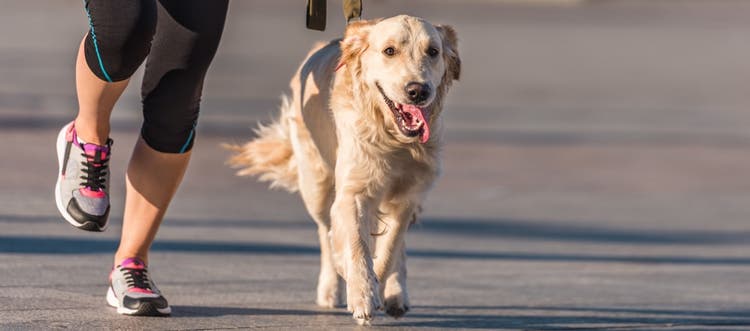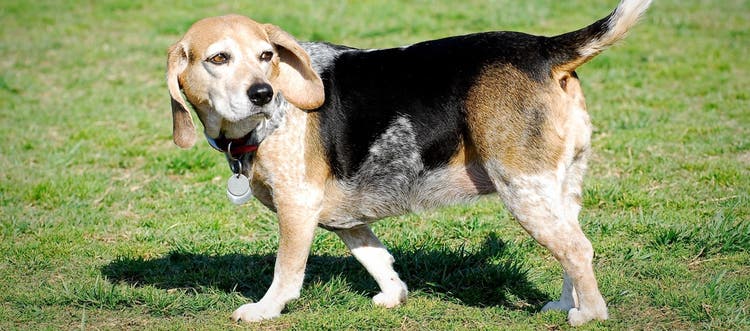Reasons your dog may be limping.
Lameness, or limping, is one of the most common reasons dogs need to visit the vet. With four paws and boundless energy, dogs occasionally hurt themselves.
However, injuries aren't the only reason your dog might be limping. In fact, there are many causes of lameness, from bone issues to problems with joints. Whether your dog is suddenly limping or has been having issues for a few weeks, here's how to determine what you can do to help them.
What Is Lameness in Dogs?
Lameness or limping is the abnormal gait (walk) that occurs when a dog puts less weight on one or more of their paws. It might be obvious — if they hold up or refuse to stand on their paw, for example — or it could be very subtle and hard to spot if they take shorter strides to ease arthritic joints.
What Causes Dogs to Limp?
There are many reasons why your dog may be limping. Here are some of the most common causes of limping in dogs.
Foreign Bodies, Cuts and Sores
For many young, healthy dogs with a limp, the reason is likely some sort of paw or foot injury, possibly with infection. Your dog may have:
- Cut or scraped their foot
- Burnt their feet on very hot pavement
- Developed frostbite on their feet
- Gotten grass seeds, thorns or sticks between their foot pads and under their skin
Torn Ligaments
Another common cause of limping among dogs is a torn ligament — oftentimes the cranial cruciate ligament (CCL) in your dog's knee. Dogs can either fully tear or partially tear this ligament, which can cause them to start limping suddenly, and often severely.
Osteoarthritis
Osteoarthritis is the most common joint disease in dogs, affecting an estimated 25% of dogs.1 It's a progressive disease that gets worse over time and affects dogs of all ages.
Possible causes of osteoarthritis include:
- Joint abnormalities (such as dysplasia)
- Joint injuries, which can occur at any age
Hip, Elbow or Shoulder Dysplasia
Dysplasia means "abnormal growth." In some dogs with dysplasia, the joint doesn't properly form when the dog is growing. Joints most commonly affected include the hip, elbow and shoulder, but dysplasia can affect any joint.
Patella Luxation
Patella luxation is when the patella or "kneecap" does not function properly, stopping the knee from bending correctly. This usually affects small dogs and is considered a genetic issue. Many dogs with patella luxation limp intermittently.
Broken Bones
Of course, broken and fractured bones can cause a noticeable limp, usually after a traumatic injury. Affected dogs usually can't bear any weight on the injured leg at all. However, sometimes a limp is not as prominent in dogs with fractured toes or small stress fractures when compared to a dog with a fully broken bone.
Bone Cancer
Bone cancer is another possible reason for limping — one that's important not to ignore. Osteosarcoma is extremely painful, and affected dogs will get progressively worse until they can't bear any weight at all. Sometimes, affected dogs go from a mild limp to completely lame suddenly.
What to Do If Your Dog Is Limping
See your veterinarian as soon as possible if:
- Your dog's pain has been gradually worsening
- Your dog's limp is severe
- Your dog is licking, chewing or otherwise bothering their foot
- You can see a wound or sore
The first thing your veterinarian will do is ask you questions about your dog's limp and overall health before examining your dog. If needed, further testing may include an X-ray, CT scan, MRI or joint aspiration.
Treatment Options for Dog Limping
Depending on the cause of your dog's limp, there are a few possible treatments your vet might recommend:
- Prescription pain relief for your dog, such as anti-inflammatories (NSAIDs)
- Rest and/or changes to your dog's usual exercise routine
- Wound care (for simple foot injuries)
- Surgery to treat the cause of the limp
- Weight loss/management
- Joint supplements such as glucosamine
- Hydrotherapy
- Acupuncture
- Laser therapy
- Stem cell therapies
Whatever the cause of your dog's limping might be, it's important that you take your pet to the vet. Your veterinarian will work with you to provide the right treatment options for your dog.
Reference
1. Lascelles, Duncan. "Joint Pain in Pet Dogs and Cats." International Association for the Study of Pain (IASP) Fact Sheet, no. 9, 2016.










